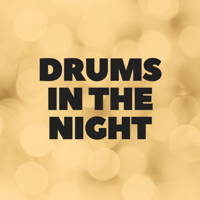
Overview
Synopsis
One of Brecht’s earliest plays, Drums in the Night takes place in Berlin over a single night in January 1919. Anna is mourning the presumed death of her lover, a soldier named Andreas. Her parents are determined that she marry Murk, a slimy war profiteer. Pregnant with Murk’s child, Anna relents and agrees to marry Murk. But Andreas suddenly re-appears, having been a prisoner of war in Africa for four years. Against the aftermath of World War 1 and the Spartacist uprising, the shattered soldier faces a fractured world and a hostile society.
Drums in the Night is Expressionist in style, though the early seeds of Brecht’s epic theatre are still present. The original production had signs hung in the theatre with sayings like “EVERY MAN FOR HIMSELF”, and the theme of class struggle would permeate Brecht’s later work.
Show Information
Context
Plot
Characters
| Name | Part Size | Gender | Vocal Part |
|---|---|---|---|
|
Lead |
Female |
Non-singer |
|
|
Lead |
Male |
Non-singer |
|
|
Supporting |
Male |
Non-singer |
|
|
Featured |
Male |
Non-singer |
|
|
Featured |
Female |
Non-singer |
|
|
Featured |
Female |
Non-singer |
|
|
Featured |
Male |
Non-singer |
|
|
Featured |
Male |
Non-singer |
|
|
Featured |
Male |
Non-singer |
|
|
Featured |
Female |
Non-singer |
|
|
Featured |
Male |
Non-singer |
|
|
Featured |
Male |
Tenor, Baritone, Bass, Bass-Baritone |
|
|
Featured |
Male |
Non-singer |
|
|
Featured |
Male |
Non-singer |
|
|
Featured |
Male |
Non-singer |
|
|
Featured |
Female |
Non-singer |
|
|
Featured |
Male |
Non-singer |
|
|
Featured |
Female |
Non-singer |
Songs
A song with an asterisk (*) before the title indicates a dance number; a character listed in a song with an asterisk (*) by the character's name indicates that the character exclusively serves as a dancer in this song, which is sung by other characters.
Monologues
Scenes
Key Terms
Relating to the theatrical style of Bertolt Brecht, emphasizing social critique and distancing the audience from emotional immersion.
A dramatic style associated with Bertolt Brecht that encourages critical thinking rather than emotional involvement.
A theatrical style that distorts reality to convey inner emotional experience, popular in early 20th-century drama.
A global conflict (1914–1918) often dramatized in plays to explore trauma, nationalism, loss, and societal transformation.
Videos
Sorry! We do not currently have videos for this guide.
Quizzes
Themes, Symbols & Motifs
Sorry! We do not currently have learning modules for this guide.
Quote Analysis
Sorry! We do not currently have learning modules for this guide.
